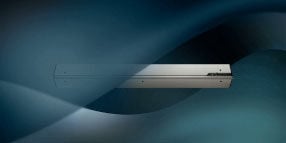
Sensors
AQ7 SERIES SENSORS
-
- carbon monoxide (CO)
- nitrogen dioxide (NO2)
- ozone (O3)
- sulfur dioxide (SO2)
The demand for lower-cost, easily transportable solutions for environmental
applications has grown substantially as public awareness and demand for healthier breathing conditions has increased, leading to a growing need for monitoring air quality across cities. AQ7 Series gas sensor are well suited for these applications and detect carbon monoxide (CO), nitrogen dioxide (NO2), ozone (O3) and sulfur dioxide (SO2). AQ7 Series offer high resolution and low detection limits as well as high correlation with control stations for ambient air quality (AAQ) applications. The 4-electrode electrochemical technology is highly sensitive to low gas concentrations in the range of parts per billion (ppb). These sensors provide accurate measurements and have excellent gas specificity.
Key features
HIGH RESOLUTION
LOW DETECTION LIMIT
HIGH CORRELATION WITH CONTROL STATION
INDIVIDUAL COMPENSATION FOR TEMPERATURE AND CROSS SENSITIVITY
Product applications
- AAQ mini stations, portable AAQ systems, AAQ UAVs
- Aerial vehicles
- Urban air monitoring networks
- National air monitoring networks
- Roadside air monitoring
- Industrial perimeter monitoring
- Environmental impact assessments
- Research and consultancy projects
- Short-term hot spot monitoring
- Others
Background
these are the release of many types of chemical pollutants into the atmosphere that contribute to global and local environmental issues such as the greenhouse effect, sick-house syndrome, and ozone depletion. In addition to meeting increasing market demand for environmentally conscientious solutions, the hazards of environmental pollution can be capable of causing severe injury within a short time period. Developers are addressing this challenge as they concentrate on outdoor air pollution, including emissions caused by combustion from motor vehicles, solid fuel burning, smoke from brush fires, windblown dust, pollen and mold spores. To meet these new gas-sensing challenges, Honeywell is committed to providing high-resolution, compact, robust, accurate, and reliable gas sensors
for use in non-industrial environmental applications.
Solution
According to the Environmental Protection Agency (EPA), ambient air quality monitoring is the systematic long-term assessment of pollutant levels through detection and measurement of the quantity and types of certain pollutants in the surrounding air. It is an integral part of an effective air quality management system to accomplish i.e. any or all of the following:
• assess the extent of pollution
• provide air pollution data to the general public in a timely manner
• support implementation of air quality goals or standards
• evaluate the effectiveness of emissions control strategies
• provide information on air quality trends
• provide data for the evaluation of air quality models
• support research (e.g., long-term studies of the health effects of air pollution)
The demand for lower-cost, easily transportable solutions for these applications has grown substantially as public awareness and demand for healthier breathing conditions has increased, leading to a growing need for monitoring air quality across cities, offices, and residential areas with mobile, smaller and low-cost stations/systems.
Multiple AAQ mini stations can be used to expand the monitoring coverage of a station or they can be used individually as a lower cost option for smaller areas. These applications typically utilize electrochemical sensors rather than optical sensors that are more appropriate for applications where high maintenance and higher cost are not barriers to use.
The response of an electrochemical sensor like the AQ7 Series (AQ7CO, AQ7ND, AQ7OZ and AQ7SO2) greatly depends on the environmental conditions, including changes in relative humidity and temperature. This continuous environmental fluctuation can cause short-term effects on the sensor’s reliability (like impacting its sensitivity and baseline offset) as well as long-term effects (such as a inherent variation in the electrolyte concentration).
In order to monitor extremely low gas concentrations in the ppb range for ambient air applications, Honeywell has designed the AQ Series with algorithmic compensation that gives users very high resolution, maximum accuracy, and long-term stability. The algorithmic compensation will account for the humidity, temperature and baseline offset.
To ensure high resolution, Honeywell provides sensor parameters which can be customized to each sensor. For example, two ozone sensors are likely to have different parameters, even when the target gas is the same. Users can input each sensor’s parameters into their sensing system to establish proper environmental compensation for that specific sensor, which can then be correlated with the output of other sensors to provide the maximum accuracy possible for the overall sensed environment.
The AQ7 Series has the lowest sensor sensitivity decay over its full lifespan, which translates into the most stable and reliable sensors for environmental applications in the current market. Because the sensor is provided with individual sensor parameters, users are able to compensate for environmental effects.
 about us
about us
 method
method
 technologies
technologies
 careers
careers
 technological partners
technological partners
 strategic partnerships
strategic partnerships
 Innoitaly
Innoitaly
 Puricraft
Puricraft